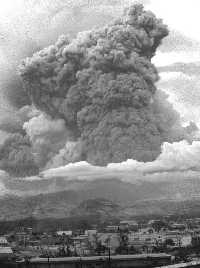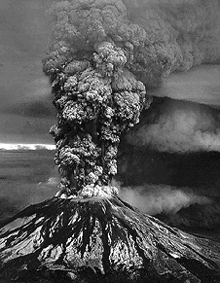This is an image of the eruption of Mt. Pinatubo.
Click on image for full size
Image from: U.S. Geological Survey
Eruptions
Volcanic eruptions come in many different forms. Shield volcanoes usually only spew lava and hot gases. These lavas flow slowly down the mountain with speeds of 15 miles per hour or slower. Composite volcanoes can put forth lava accompanied by clouds of ash, bombs, lava fragments, crystallized, glassy material, as well as hot gases. In some eruptions, ash and lava are buoyied by hot vapors and pour down the slopes of a volcano very rapidly, with speeds up to 100 miles per hour. This special type of eruption destroyed the city of St. Pierre in 1902. In other cases hot material from the volcano can melt snow and ice at the volcano summit and the whole mass of mud and lava can sweep rapidly down the mountain, destroying everything in its path. This type of flow is called a lahar.
There have been some spectacular eruptions in
Earth history. These include Mt. Pelee, Krakatoa, Crater Lake (formerly Mt. Mazama), Mt. Vesuvius, Mt. St. Helens, Mt. Pinatubo.
You might also be interested in:

How did life evolve on Earth? The answer to this question can help us understand our past and prepare for our future. Although evolution provides credible and reliable answers, polls show that many people turn away from science, seeking other explanations with which they are more comfortable.
...more
Lava is the word for magma (molten rock) which is on the surface of the Earth. After being released from the magma chamber and cooling, lava hardens into rock. The term lava can describe active flows,
...more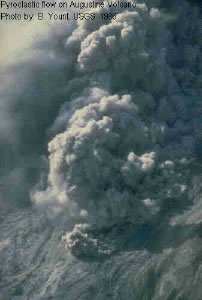
Pyroclastic material is another name for a cloud of ash, lava fragments carried through the air, and vapor. Such a flow is usually *very* hot, and moves *rapidly* due to buoyancy provided by the vapors.
...more
Mt. Pelee is not a very tall volcano, in fact it is an example of what is called a "lava dome". An extremely destructive eruption of Mount Pelee occurred in 1902. A coastal town, about 4 miles downslope
...more
Lahars are mudslides caused by the mixing of volcanic ash and debris with water. They can occur when the heat from a volcano melts snow and ice on the volcano's summit, or if an eruption disturbs a crater
...more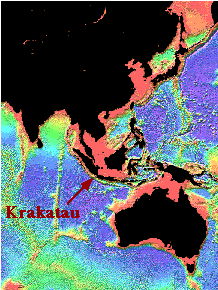
One of the most powerful volcanic explosions in the history of the world occured at Krakatoa in the last century. Krakatoa was formerly a volcanic island located between Java and Sumatra. It was located
...more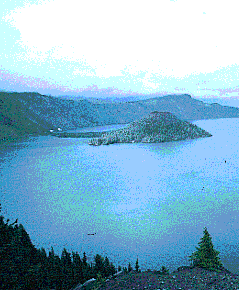
Mt. Mazama was once among a cluster of stratovolcanoes stretching along the Washington and Oregon coast. This cluster of volcanoes includes Mt. Hood, Mt. Rainier, and Mt. St. Helens. The magma chamber
...more


